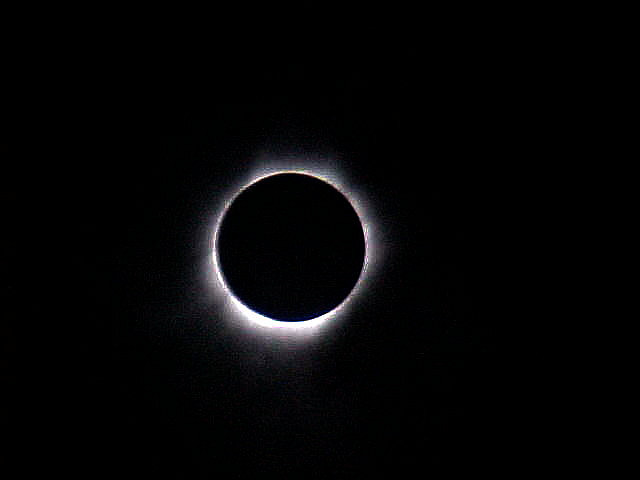By Helen Sim
Got your ticket to Cairns? Camera gear ready?
No, me neither. But lots of people have, and they’ll all be in Far North Queensland on November 14 (local time), waiting for the Sun and Moon to tango.
The thing is, how can they be so sure this eclipse is going to happen, where and when as advertised? OK, so they have the phone app. But someone has to write the app.
The ancients were app-less. But they spent more time looking at the sky than most of us do now, and some recorded what they saw.

Image: Steve and Ruth Bosman
Ancient reports of solar eclipses can be a bit dodgy. However, a credible record on a Babylonian clay tablet mentions one happening on what we’d now call May 3, 1375 BC. Surviving Chinese records of eclipses begin at about 709 BC.
By 273 BC the Babylonians had noticed that the periodicity of eclipses is governed by the “Saros cycle”—a period of 6585.3213 days (18 years, 11 days and 8 hours). This is easiest to observe with lunar eclipses (when the Moon is shadowed by the Earth), but it also applies to solar eclipses.
There’s a nice illustration of Saros cycles here. You’ll notice that although there’s a pattern, it doesn’t repeat exactly. And although the Babylonians knew of the Saros, it’s debated whether they used them to predict solar eclipses.
Successive eclipses aren’t visible from the same part of the Earth (as any eclipse chaser will tell you). Although a total solar eclipse occurs somewhere on Earth about every 18 months on average, at any given place they recur only once every 410 years: 330 years if you’re in the northern hemisphere, and 540 if you’re in the south (again, all those numbers are averages).
The most recent total solar eclipse visible from Australia occurred on December 4, 2002.
The next one, after this 2012 event, will be on July 22, 2028. (It will track across much of Australia, including Sydney.)
There is no simple formula to predict the dates of solar eclipses. In fact, to predict them with a fair degree of certainty, you need a good understanding of the Moon’s orbit and apparent speed of travel (which isn’t constant).
By about 206 AD Chinese astrologers could predict solar eclipses from the motion of the Moon.
The ancient Greeks, building on astronomical knowledge from the Babylonians, could do it too. The amazing Antikythera mechanism, dated to 150-100 BC, was used to calculate positions of the Sun, Moon and planets, and events such as eclipses. It even incorporates the variable speed of the Moon.
Cut to the 17th century. Isaac Newton published his new-fangled equations for gravity in 1687. Now astronomers could (and did) calculate the movements of the Moon better, and thus improve predictions for eclipses.

Only use approved eclipse watching glasses. And no matter who you are – you look stupid in them.
The calculations weren’t perfect, though. Newton’s colleague Edmond Halley rediscovered Saros cycles (remember those?) and used them to correct calculations made with Newton’s equations. Halley confidently predicted the solar eclipse of May 3, 1715 [April 22 on the old calendar], which was to pass over Britain.
Halley created a map of the eclipse path—he was the first person to do so—and sent it out around the country, asking for people to record the time when total darkness reached them. His own predictions were pretty good: he was out by just four minutes.
By the late 19th century there was a complete mathematical treatment—a mathematical model—of the Moon’s orbit: it required 1500 separate terms and covered several pages of print.
Solar eclipses have been used for science. Most famously, in 1919 British astronomer Arthur Eddington made use of one to test Einstein’s newly published theory of general relativity. In the eclipse coming up, some groups will be using the eclipse to study the Sun’s corona (outer atmosphere), looking for information about how its temperature changes over the 11-year sunspot cycle.
But eclipses are now mostly just a damned good excuse for a party. I’m looking forward to 2028!
Sources
http://image.gsfc.nasa.gov/poetry/ask/a11846.html
http://en.wikipedia.org/wiki/Solar_eclipse_of_July_22,_2028
http://en.wikipedia.org/wiki/Antikythera_Mechanism
http://phys.org/news/2012-11-total-solar-eclipse-australia-nov.html
http://en.wikipedia.org/wiki/Saros_%28astronomy%29
http://www.gutenberg.org/files/24222/24222-h/24222-h.htm#CHAPTER_XII
J. Marchant, “Mechanical Inspiration”. Nature 468, pp. 496-498 (2010)
D. Steel, “Eclipse: The celestial phenomenon that changed the course of history”. (Joseph Henry Press, 2001)
F.R. Stephenson, “Historical Eclipses”. Sci Am 247 no.10, pp. 154-163 (1982)

